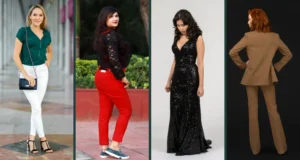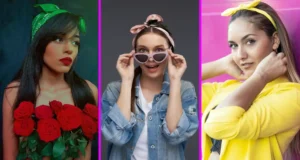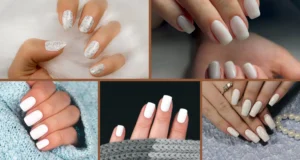For many older women, dyeing their hair purple is about more than fashion – it becomes a bold statement of empowerment and individuality.
As people reach a certain age, society dictates that they fade into the background, conforming to norms of graying hair and “appropriate” styles for their demographic. But countless older women are now defiantly coloring their hair purple, refusing to become invisible.
Their purple locks send a clear signal – these women do not intend to fade quietly into the background just because they’ve accumulated wrinkles and gray hair. Purple is a hue of defiance and nonconformity – by adopting it, older women demonstrate that outdated expectations of how elders should look do not apply to them.
With their purple hair, these women are making a visual declaration of independence – they refuse to conform to society’s limited concepts of beauty and aging. They want to be seen as individuals, not stereotypes of “little old ladies”. Purple hair helps communicate this message powerfully.
So for the growing number of older women embracing purple hair, it becomes far more than just a dye job. Their purple strands represent a journey of self-discovery and empowerment – a refusal to let age and norms diminish their sense of style, spirit, and joyful creativity. Their purple hair shows the world that wit and wisdom go hand in hand and vitality has no age limit.
Why are old ladies wearing purple hair?
Express their individuality and joyful spirit
Throughout history, old ladies have worn purple hair to express their individuality and joyful spirit. Purple is a vivid color that makes a bold statement, perfectly suited for older women who wish to defy aging norms.
The tradition of purple hair for older women is thought to have started in the late 1800s. As women grew older, society expected them to fade into the background and conform to expected norms for ‘little old ladies’. But some spirited wives and widows wanted to show they still had a zest for life.
Purple dye, made from flowers and vegetation, was readily available and affordable. So older women began dyeing their hair purple as an act of rebellion and self-expression. Purple hair showed that just because they had wrinkles and grey hair didn’t mean they had lost their sense of fun and fashion.
This tradition continued into the early 1900s and beyond. Even today, you’ll see older women with beautifully styled pinks and purples interwoven through their white hair. Purple hair has become a symbol of experience, wisdom, and joie de vivre for women of a certain age.
It’s a colorful reminder that getting older doesn’t have to mean conforming or fading into the background. Older women with purple hair proudly proclaim that they still believe in being joyful, creative, and true to themselves – regardless of societal expectations.
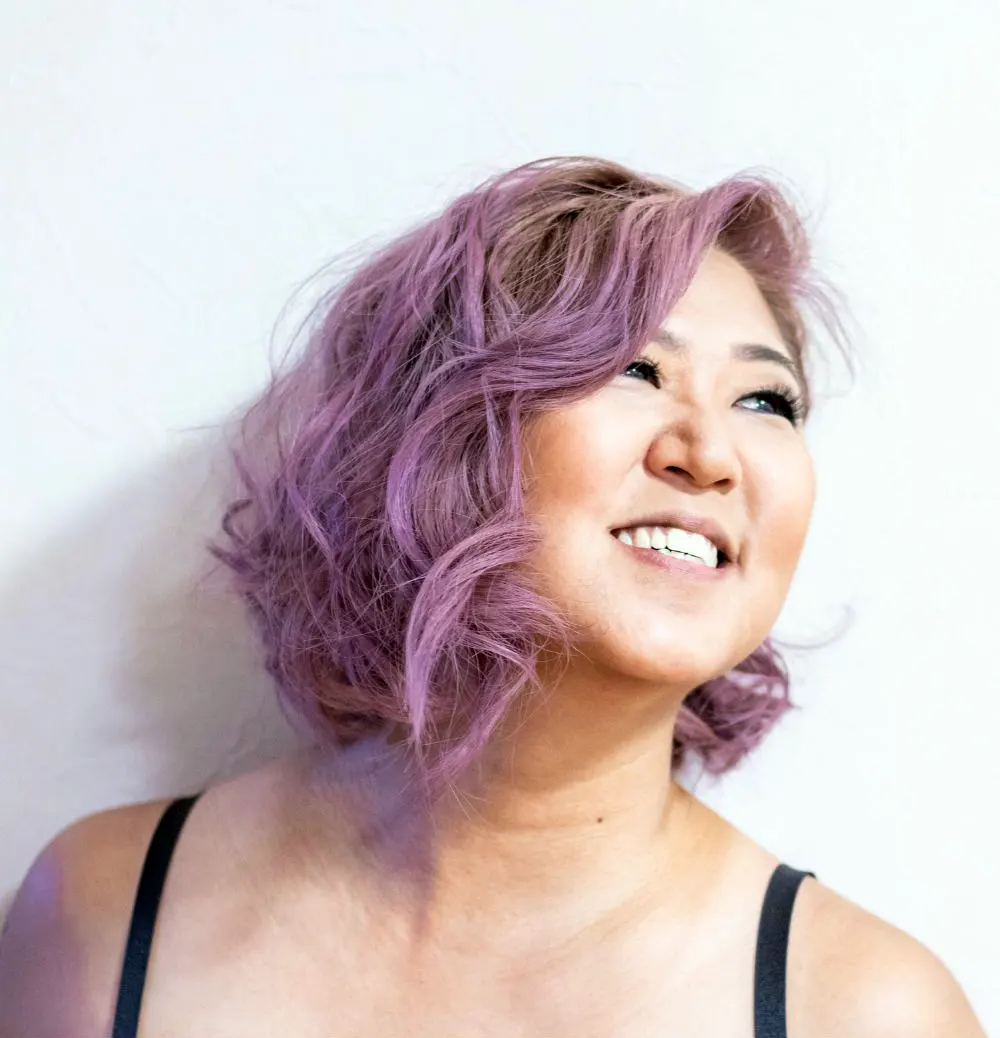
Fashion and self-expression choice
Older women have colored their hair purple as an act of self-expression and individuality. Purple is a vivid hue that makes a bold statement, perfectly fitting for ladies who wish to defy aging norms.
The tradition of purple-haired older women likely began in the late 1800s. Society expected ladies to fade into the background and conform as they aged. But spirited wives and widows wanted to show they still had zest.
Purple dye from plants became available. So older women dyed their hair purple to rebel and showed just because they had wrinkles, and gray hair didn’t mean they lost their fun and style.
This persisted into the 1900s. Even today, you see women with purples woven through white hair. Purple hair has become a symbol of spirit, wisdom, and joy for women of a certain age. It colorfully reminds us that getting older need not mean conforming or fading away.
Older women with purple hair proudly show they still believe in being joyful, creative, and true to themselves regardless of society’s expectations.
Making bold statements, defying ageism
Many older women are choosing to dye their hair purple as a way to assert their independence and challenge ageist stereotypes. By embracing bold and non-traditional hair colors, they are sending a powerful message:
Colored hair sends a clear signal – older women with purple hair intend to show the world that they refuse to fade into the background just because they have grey hair.
Purple is a color of defiance and nonconformity – by adopting it, older women demonstrate their unwillingness to conform to outdated expectations of how elders should dress and act.
Purple hair becomes a visual declaration of independence – when older women color their hair in vivid purples, they highlight that society’s concepts of beauty and aging are not rules they must follow. They want to be seen as individuals, not stereotypes; purple hair helps communicate this.
Older women with purple hair set an inspiring example – embracing bold self-expression encourages others to do the same regardless of age. Their purple hair shows that self-confidence and joyful creativity has no age limit.
Ultimately, purple hair symbolizes liberation – liberating older women from the constraints of ageist mindsets while demonstrating that wisdom and vibrancy go hand in hand.
In short, when older women color their hair purple, they send a powerful message that age does not limit their ability to express themselves. Their purple hair asserts their independence, confidence, and refusal to conform to outdated ideals of how older women should look and act.
Disguising gray hair, feeling vibrant
For older women, purple hair can be a great way to disguise gray strands, feel younger and boost confidence.
As women age, their hair often turns gray, which some view as unattractive. Dyeing hair purple covers the gray, creating an instantly more youthful look.
Purple is a bold, vibrant hue that makes an impact. For older ladies, purple hair can transform their appearance, instantly making them feel younger and full of life. The vivid color infuses them with a renewed sense of joy and energy.
Gray hair can make women feel old and unattractive. But purple hair shows the world they refuse to embrace aging stereotypes. It’s a confident, creative choice that boosts spirits and self-esteem.
Unconventional hair color demands daring. By embracing purple locks, older women are willing to take risks, express their true personalities and stand out from the crowd. Their creativity defies society’s expectations of how older women should look.
Purple hair has become a trend for all ages. By adopting this look, older ladies show they refuse to fade into the background. They stay current, blending youthful style with wisdom and experience.
For older women considering purple hair, I say go for it! Covering gray hair and feeling youthful and self-assured are valid reasons to dye your locks this vibrant hue. Purple hair can become your symbol of reclaimed spirit, confidence, and joy.

Symbolizing strength, wisdom, spirituality
For centuries, the color purple has been associated with qualities like strength, wisdom, spirituality, and royalty. So it’s no surprise that some older women choose to dye their hair purple as a symbolic gesture.
Purple is a rare hue in nature, making it seem mystical and powerful. In ancient times, purple dye was expensive and accessible only to royalty and nobility. So color became linked with strength, authority, and high status. These associations have endured throughout history.
Purple is also tied to spirituality. In many religions, purple is the color of clergy who possess wisdom. And purple flowers like violets have long been symbols of spirituality.
Older women who color their graying hair purple may be aiming to convey these symbolic meanings. They may wish to show the world that they still feel strong, wise, and connected to something larger. Purple hair becomes a visual representation of inner qualities like resilience, experience, and spiritual depth.
These women break societal norms and assert their individuality by choosing an unconventional hair hue. Purple hair sends a message that they refuse to fade into the background. They intend to stand out, challenge expectations and express their multifaceted identities.
Purple hair symbolizes far more than a passing fashion trend for these older women. It becomes a badge of strength, wisdom, and spirituality. Their purple strands represent an internal journey of self-discovery, meaning, and purpose that continues even in the later stages of life.
Celebrating creativity, embracing imagination
For older women, dyeing their hair purple can be a way to celebrate their creativity, embrace their imagination and break free from conventional norms.
Purple is often associated with creativity, imagination, and artistic expression. It represents freedom of thought and spirit. Older women can showcase their creative and imaginative side by dyeing their aging hair purple.
Embracing purple hair shows that age has not diminished their sense of wonder or ability to dream. The vibrant color infuses them with a youthful spirit and reminds them that possibilities still remain. Purple symbolizes their inner creative spirit that refuses to fade with age.
Conventional norms dictate that older women act and dress a certain way. But purple-haired elders break the mold. Their creative color choice demonstrates a willingness to take risks, think differently, and express individuality. They refuse to conform to stereotypes of how older women ‘should’ behave.
Purple hair instantly makes an impact, turning heads and sparking curiosity. It shows that these women do not intend to fade into the background. They want to stand out, make unexpected choices and embrace life with an imaginative and curious mindset.
For older women considering purple locks, I say go for it! Your creativity, sense of wonder, and desire for self-expression are just as valid now as they were in your youth. Purple hair can symbolize your inner imagination and freedom of spirit that refuses to diminish with age. Let it powerfully express who you truly are – creative, curious, courageous, and ageless.
Linked to royalty, historical power
For older women, purple hair can symbolize inherent dignity, confidence, and life experience.
For centuries, purple represented royalty and power. Only emperors and popes could wear this exclusive hue. So when older women dye their graying hair purple, they may aim to symbolize the dignity, confidence, and wisdom that comes with age.
Purple hair becomes a visual representation of inner strength, competence, and substance. It conveys the message that older women are not to be underestimated. They have earned their place in the world through hard work and experience.
These women assert their individuality and break societal norms by choosing an unconventional hair color. Purple hair symbolizes their refusal to fade into the background. They intend to show the world that they remain vibrant, independent, and capable, with wisdom gained over many years.
Purple locks represent a lifetime of knowledge, overcoming adversity, and forming deep connections. For older women, purple hair symbolizes a full life well lived and a deep understanding of humanity and oneself.
For older women considering purple hair, I say go for it! Your inherent dignity, confidence, and wealth of experience are valid reasons to dye your locks this royal hue. Purple hair can become your symbol of life, wisdom, inner strength, and a colorful spirit that refuses to diminish with age.
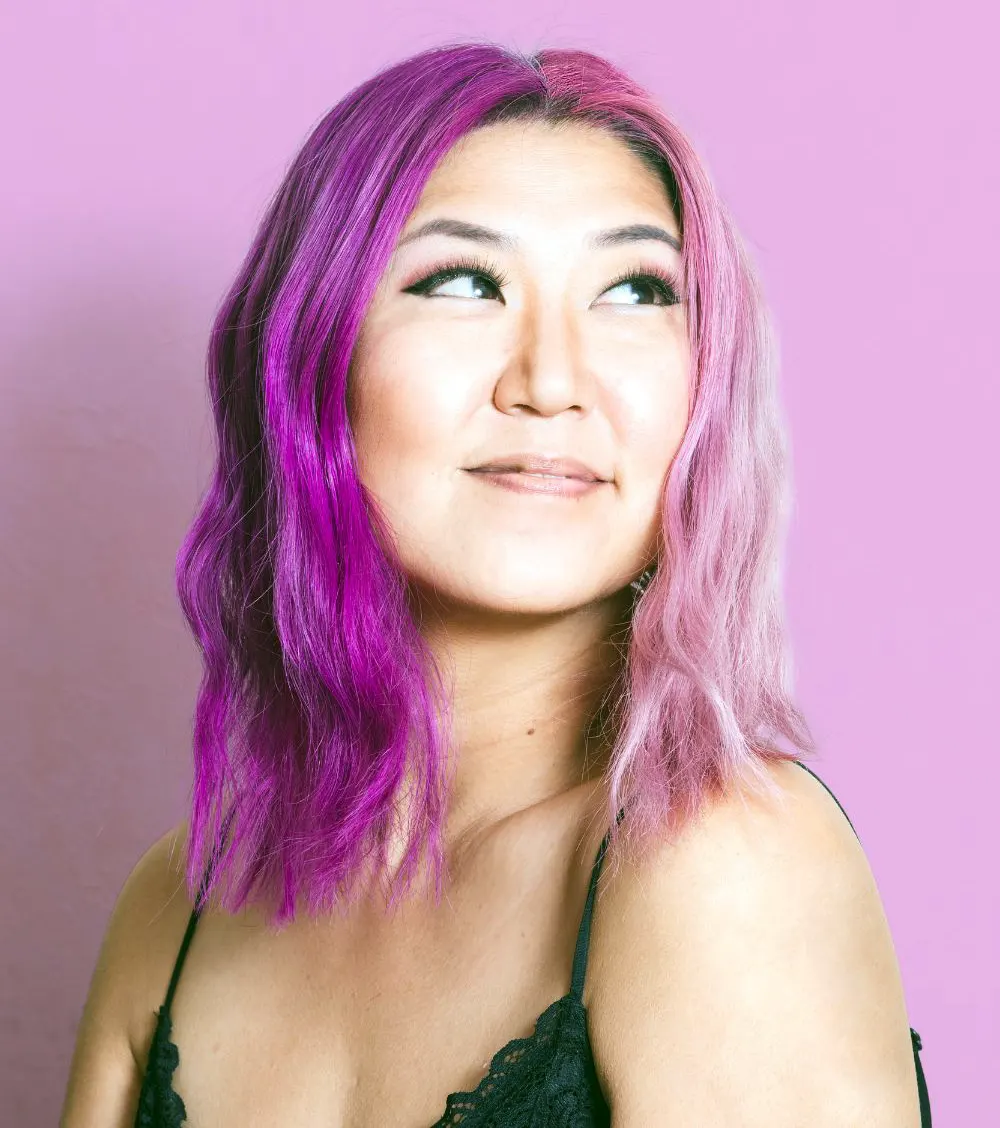
Summary
Older women wear purple hair for various reasons, including self-expression, defiance, and symbolism. The tradition of purple-haired old ladies started in the late 1800s as an act of rebellion against norms expecting older women to fade. Purple dye from plants became available, so older women used it to show they still had zest despite wrinkles and gray hair.
For many older women today, purple hair symbolizes empowerment and individuality. Their purple locks send a signal – these women refuse to fade into the background just because they aged. Purple represents defiance of expectations of how older adults should look.
Many wear purple hair as a visual declaration of independence. They refuse to conform to society’s limited concepts of beauty and aging. Purple hair helps them assert their individuality, not as “little old ladies” but as vibrant individuals.
For older women embracing purple hair, it represents more than fashion – a journey of self-discovery and empowerment. Their purple strands show that wisdom and vitality have no age limit. Purple also helps cover gray hair, making women feel younger and boosting confidence.
Overall, purple hair has become a symbol of spirit, wisdom, and joy for women of a certain age – a reminder that getting older need not mean conforming or fading away.
FAQ
Why do some old ladies dye their hair blue?
Many older women dye their hair blue as part of a hair treatment called a “blue rinse”. A blue rinse is a diluted hair dye that helps reduce the yellowish appearance of gray or white hair and restores its luster. It gained popularity after Jean Harlow.
Is purple hair a trend?
Yes, purple hair is currently a trend in 2023. It offers a bold and eye-catching choice, allowing individuals to express their individuality and creativity. Various shades cater to diverse preferences and skin tones, from dusty lilac to vibrant violet. The trend is versatile, with options like balayage to add subtle or natural-looking purple highlights. Embracing purple hair allows people to experiment with their appearance and stay on-trend while embracing their unique style.
What hair color is best for 50 year old woman?
The answer largely depends on personal preferences, skin tone, and hair type. However, some hair colors that are popular among women over 50 include honey bronde, toned-down ginger, ash blonde, warm smokey, deep auburn, sunset blonde, highlight and lowlight ginger, dark mocha, bright copper, and silver.
What skin tone does purple hair look good on?
Purple hair can look good on various skin tones, depending on the specific shade of purple. Darker, deeper shades of purple tend to look good on olive and darker skin tones, while lighter shades of purple work well on fair to neutral skin tones.
Why do old people in Japan dye hair purple?
Purple has traditionally been associated with nobility and royalty in Japan, so some older adults may choose to dye their hair purple as a way to symbolize their status or to feel more youthful.
